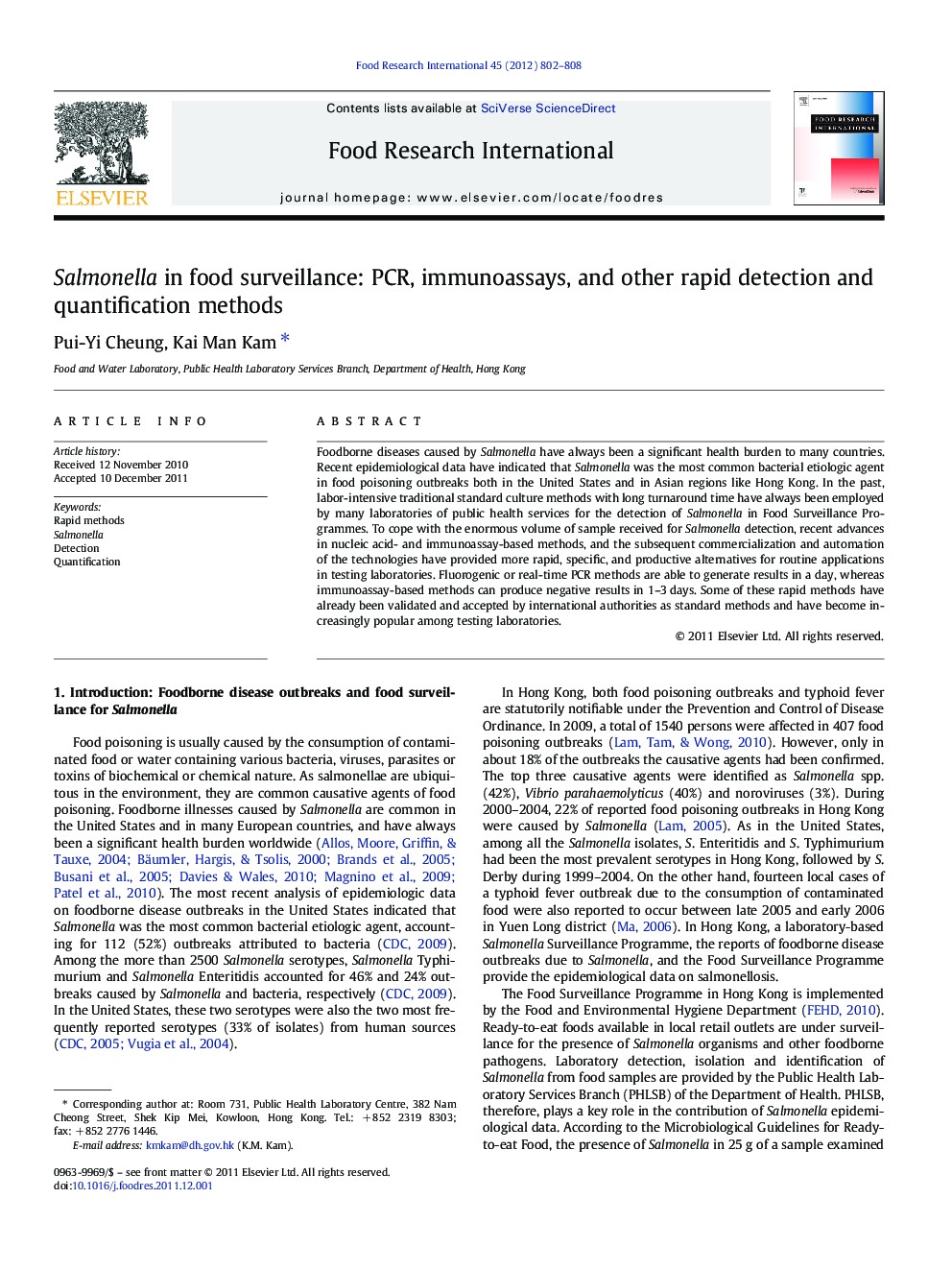| Article ID | Journal | Published Year | Pages | File Type |
|---|---|---|---|---|
| 4561730 | Food Research International | 2012 | 7 Pages |
Foodborne diseases caused by Salmonella have always been a significant health burden to many countries. Recent epidemiological data have indicated that Salmonella was the most common bacterial etiologic agent in food poisoning outbreaks both in the United States and in Asian regions like Hong Kong. In the past, labor-intensive traditional standard culture methods with long turnaround time have always been employed by many laboratories of public health services for the detection of Salmonella in Food Surveillance Programmes. To cope with the enormous volume of sample received for Salmonella detection, recent advances in nucleic acid- and immunoassay-based methods, and the subsequent commercialization and automation of the technologies have provided more rapid, specific, and productive alternatives for routine applications in testing laboratories. Fluorogenic or real-time PCR methods are able to generate results in a day, whereas immunoassay-based methods can produce negative results in 1–3 days. Some of these rapid methods have already been validated and accepted by international authorities as standard methods and have become increasingly popular among testing laboratories.
